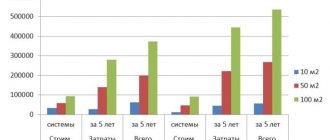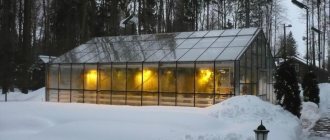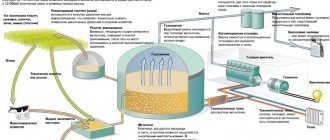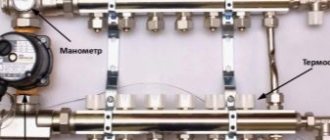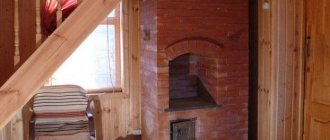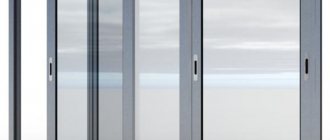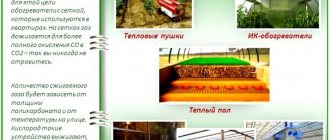In what cases is anti-freeze for concrete used and how is it used: key points, recipe
Undoubtedly, construction in winter is more difficult than in summer. Most often, weather conditions are not very conducive to performing quality work. Usually, either professional construction teams or craftsmen who want to move into their own home as soon as possible continue to work in severe frosts. Specialized antifreeze additives will be an invaluable help for both. The use of the latter helps prevent premature hardening of cement.
What is an antifreeze additive to the solution?
As a rule, when the ambient temperature drops significantly, builders begin to experience additional difficulties when working with concrete and all kinds of solutions. This is because cement-based compounds cannot withstand frost. Thus, at a temperature of -5 o C, it would seem that high-quality solutions stop gaining strength.
In recent years, craftsmen are increasingly using anti-frost additives that can withstand temperatures dropping to -35 o C or more. Specialized compositions for contain chemicals whose active components reduce As a result, concrete sets in the masonry even in extreme cold.
The problem of organizing brickwork in cold weather
When conducting construction in winter, it becomes most problematic to provide structures with the necessary strength. When the temperature drops below zero, the liquid in the solution crystallizes. Thus, the process of cement hydration stops.
As the air temperature rises, the ice formed inside the masonry and on the surface of the building material begins to melt, which necessarily causes a decrease in the adhesion of the mortar. Another negative effect is the formation of small cavities in the concrete structure, which can subsequently lead to fairly rapid destruction of walls and ceilings.
Features of solution preparation
Despite the difficult working conditions, the quality can be no less than in the warm season. However, in order to obtain the expected result, it is necessary to prepare a special solution, which must contain antifreeze additives.
When starting to prepare the building mixture, you need to take care of your personal safety. It should be borne in mind that almost all antifreeze additives differ in their composition based on quite aggressive chemicals that can cause harm to health. Therefore, when preparing concrete, you need to work in thick gloves, safety glasses, rubber boots and, if possible, special clothing.
In case of more serious cooling down to -30 o C, it is advisable to use potash. The advantage of this solution is protection against corrosion in the case of the construction of reinforced floors. The use of potash also helps prevent the appearance of efflorescence on the hardened solution. As for chlorine-containing additives, the latter do not slow down the destruction of reinforcing parts of building structures.
Antifreeze additive: consumption
When making compositions for brickwork, it is important to maintain the required proportions. They depend, first of all, on the ambient temperature.
Let's look at the average standards typical for the use of the most popular “antifreeze” in the table. It reflects the consumption of antifreeze additives as a percentage of the mass of cement.
| Air temperature | Sodium formate | Potash | Sodium nitrite |
piorit.ru
Why are antifreeze additives needed?
Under normal conditions, concrete hardens at temperatures from plus 5 to 35° Celsius.
But what happens if the temperature drops?
The lower the air temperature, the slower hardening will occur. At temperatures below zero, the water in the concrete solution begins to crystallize and the hardening process stops. Ice crystals disrupt the bonding process between concrete and reinforcement, further promoting its peeling.
Important!
For work with concrete, it is desirable that the average daily air temperature exceeds +5° Celsius. At temperatures below –4° Celsius, concrete loses up to 50% of its strength.
If the temperature either rises above zero or drops below, the concrete either gains strength or stops. As a result, hardening takes longer.
It is advisable to carry out concreting in the warm season. But the climatic conditions in most regions of Russia are such that the optimal temperature for working with concrete occurs only during very limited periods. Freezing construction for six months due to the onset of cold weather is not always profitable. There are also disadvantages to concreting in the warm season: in the summer heat, concrete sets too quickly, and in the fall there is frequent precipitation.
Possible reasons for concreting in the cold season:
- Concreting on soft soil, which is difficult in the warm season.
- The desire to save on cement, since it is cheaper in winter.
- There is an urgent need to start construction.
To ensure hardening, special measures are taken when concreting in winter:
- electric heating of concrete;
- steam heating;
- covering with film and insulation;
- arrangement of temporary shelter heated by heat guns;
- antifreeze additives.
With a slight decrease in temperature, increase the amount of cement in the solution.
All types of heating are quite complex activities, which also require additional costs: the concrete must be heated evenly or not allowed to cool during the entire period of gaining critical strength. Winter concreting may require an investment of 20-30% more than summer concreting.
Important!
The hardening time depends not only on the air temperature, but also on the type of concrete.
If concrete manages to gain critical strength before frost, then after thawing, hardening will continue. But if concrete that has not reached critical strength freezes, the water will crystallize, and cavities and cracks will appear in the concrete, reducing its strength.
Important!
If there is no data on the critical strength, it is taken as 70% of the design strength.
The introduction of antifreeze additives is the simplest and most cost-effective option for concreting at low temperatures.
application features, photos and videos
In a situation where it is necessary to carry out any concrete work on the street during the winter, builders, as a rule, are faced with one typical problem. The fact is that at sub-zero temperatures, the cement mortar simply does not have time to harden before the moisture in it freezes.
Photo: potash is packaged in bags
That is, the physics of the process here is something like this:
- The solution is poured.
- The water freezes in it.
- After the water solidifies in the mass, the cement itself and other components begin to gradually harden.
It turns out that cement hardens in incredibly difficult conditions - without uniform evaporation of moisture, without positive temperatures around it, etc. For these reasons, concrete is initially weak - that is, its structure is uneven.
Example of pouring concrete in winter
What this means in practice is discussed in the table below.
| Defect type | What does this mean? |
| 1. The appearance of cracks and chips. | When moisture gets on the surface of a concrete structure, water will simply “enter” into the structure through such cracks. And when frost sets in, the water will naturally freeze and gradually “tear” the concrete. At the same time, the number of cracks will increase, and this will accordingly allow even more water to penetrate inside the structure. |
| 2. Lack of optimal strength level. | If concrete hardens after water freezes, then it simply cannot “gain” the required level of concrete hardness. Moreover, in such conditions the most important quality – solidity – will be absent. But the level of resistance of the structure to compression and tension depends on this. |
| 3. Low level of frost resistance and too much susceptibility to moisture. | Unevenly hardened concrete will have not only cracks in its structure, but also completely natural “gaps” and pores. Due to this, it will absorb moisture well, and what this means for concrete is already described in paragraph 1. That is, frost in this situation will be very destructive for the structure. |
As you can see, concrete poured with your own hands in winter is difficult to make of high quality. However, if you use special additives, you can avoid all of the above problems.
One of these additives is potash.
Let's take a closer look at what this substance is and what nuances there are when using it.
Description of material
Potash (aka potassium carbonate) is an antifreeze additive in the form of a white or light gray powder, which is used for faster and better solidification of the solution. However, the substance is used to work with the solution not only in winter, but also in summer.
This is what the powder looks like
Please note that due to the use of potash in certain structures, so-called “efflorescence” may appear on their surface. These are white or gray spots that are like potassium fumes. Take this point into account - after all, such a phenomenon can spoil appearance of the structure, which will require additional finishing.
Efflorescence on a concrete surface
Scope of application
The fact is that in winter it is important to add potash to the mixture for the reason that the water in the solution solidifies, but in the summer a slightly different process occurs - the moisture quickly evaporates from the mixture. That is, it turns out that in both cases the concrete hardens without the required amount of water.
But if you add potash to concrete, the substance will speed up the hardening time of the cement and the working mass will harden normally, fully and evenly at any temperature.
Essentially, potash is a lye that is obtained by evaporating moisture from wood ash. And the word itself is translated from German as pot (sweat) and ash (ash). The fact is that in the Middle Ages the substance was evaporated in pots.
Among other things, the material is used to make glass, liquid soap, and fertilizers.
The price of this substance itself is quite low, and if you consider that very little powder is added to the solution (about 2% of the total amount of the mixture), then the use of potash turns out to be economically profitable.
Adding additives to the solution
Please note that the use of potassium carbonate in concrete solutions also allows you to save on the fact that lower grades of cement can be added to the mixture without losing the level of strength of the concrete structure.
In general, the material is in great demand in our country. Especially in Siberia and in the northern regions, where low temperatures prevail most of the year.
As for the effect of the powder on metal reinforcement (which is found in many reinforced concrete products), then everything is in order - there will be no corrosion or corrosion of steel due to potash.
The material does not burn and is not a dangerous or toxic cargo, so it can be safely transported on your own and stored in ordinary warehouses.
Storage of sodium carbonate
If we talk about exactly how much powder to add to a cubic meter of concrete, then it’s worth considering everything in more detail - the amount of potassium carbonate depends on the temperature outside and on the brand of cement.
All data is shown in the table.
| Brand of solution | M-50 | M-100 | M-150 |
| Approximate ambient temperature | Amount of potash | Quantity of powder | Quantity of potash |
| 0 to -5 °C | 9-11 kg. | 17-20 kg. | 20-24 kg. |
| -6 to -10 °C | 11-15 kg. | 20-27 kg. | 24-32 kg. |
| -11 to -15 °C | 15-18 kg. | 27-34 kg. | 32-40 kg. |
| -16 to -20 °C | 18-22 kg. | 34-41 kg. | 40-48 kg. |
| -21 to -25 °C | 22-28 kg. | 41-51 kg. | 48-60 kg. |
Now about the negative side of the issue.
Restrictions on use
The instructions for using this substance include the following prohibitions:
- Potash should not be added to solutions that contain active silica.
- It is prohibited to add additives to concrete that will subsequently come into contact with lime or sand-lime brick.
Sand-lime brick
- You cannot use a solution with the addition of potash if the product or structure will be used in conditions of high humidity in the future.
- The substance is not recommended for the preparation of large-porous mixtures, expanded clay concrete or solutions without sand.
In addition, it is worth remembering that potash corrodes the insulation of wires.
This concludes the review of the material. Let's summarize the article.
Conclusion
We figured out why potash is added to concrete, what kind of substance it is, and what features it has. We hope that the information and advice provided will be useful to you in practice. And if you want to learn more visual information on this topic, we advise you to additionally watch the video in this article.
masterabetona.ru
How to use supplements
Substances with antifreeze properties are introduced into concrete and plaster mortars, in mixtures for monolithic reinforced concrete structures or prestressed reinforced concrete structures simultaneously with other components. The temperature for introducing additives should not be lower than -15°C/-25°C. This option for working in winter is called the cold concreting method.
Antifreeze additives are introduced into the solution only at low temperatures, and their use for other purposes is not recommended. To get the maximum benefit from adding additives, it is recommended to moisten the concrete surface for several days at intervals of 5-6 hours.
Application of antifreeze additives
Based on the principle of action, all reagents are divided into two types:
- Weak accelerators (solidification retarders) that lower the freezing point of water in the solution. These are some types of electrolytes, sodium nitrite and chloride, ammonia solutions in water, polyhydric alcohols, urea.
- Additives that contain antifreeze - such liquids activate the hardening and setting of cement. These are additives containing sodium: mixtures of calcium chloride with calcium nitrite-nitrate, calcium nitrite-nitrate, sodium chloride, sodium nitrite, urea.
- Additives with weakly expressed antifreeze properties, activating the process of setting and hardening of cement, and causing the release of thermal energy at the initial stage of concrete setting. These are sulfates of ferric iron and aluminum - such substances activate the formation of microcapillaries in the cement stone.
production of antifreeze liquid
...dishwashing detergents are already free creativity, high precision is not necessary.
...dishwashing detergents are already free creativity, high precision is not necessary.
Dilute water with alcohol according to the table below. Since we want to get a freezing point below -27°C, we take 2 liters of alcohol for 3 liters of water. Next, pour in the blue and a few drops of dishwashing detergent (they also contain water), and sprinkle cologne (a bit of alcohol) into the jar. Mix.

